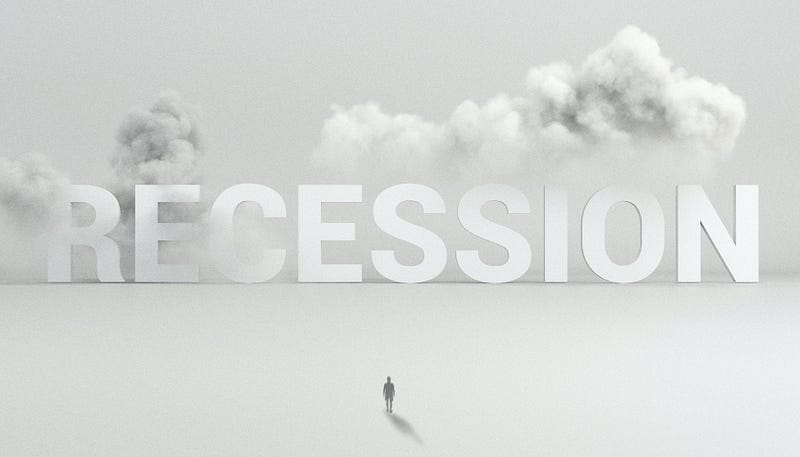Part 3 of a Discussion of Peter Foster’s Why We Bite the Invisible Hand Chapter 10 “The Rise and Fall and Rise of John Maynard Keynes”
Just as the bad economy of the 1970s precipitated the end of Keynesianism and the rise of neoclassical economics, the 2008 financial crisis, the Great Recession, served as a reason to kill neoclassical economics and revive Keynesian thinking.
However, Foster takes issue with the new Keynesians’ particular criticisms of neoclassical economics being “an old canard” (p. 217). Foster sees the new Keynesians promoting the same “old anti-capitalist caricatures and straw men.” (p. 219)
The new Keynesians say neoclassical theory should be tossed out because it was based on two false assumptions: people are perfectly rational and markets are rationally perfect. (p. 217)
However, Foster says to come up with those two simplistic assumptions the critics were perverting the actual economic theories of rational expectations and the efficient market hypothesis. (p. 218)
These theories had nothing to do with Spock-like rationality or perfect markets…Their relevant features were, respectively, that (a) people are rational enough not to be fooled — at least in the longer term — into thinking that printing money creates wealth, or that government expenditure is a substitute for the private variety (the essential conceits of Keynesianism); and that (b) markets reflect the state of current knowledge, which may prove misguided, and will inevitably be superseded, but which can’t be second guessed by governments. (p. 218)
The Great Recession did not change the first point, which is why the bail outs did not fix anything. Nor did it disprove the second point. The markets produced the housing crisis quite rationally given the regulatory signals they were given.
For example, the government sponsored enterprises Fannie Mae and Freddie Mac were required to aggressively increase mortgage lending to people who did not meet the traditional financial requirements of lenders in order to serve the political ends of expanding homeownership.
Notwithstanding the nobility of the intention, the reality is people who do not qualify for a loan but get it anyway will have a high default rate.
This is one of many regulatory changes that contributed to the 2008 housing crisis. The market responded by creating mortgage derivatives to deal with the anticipated high default rate.
The novelty of these financial products led to pension funds, governments, and others who only wanted safe investments to buy these inherently risky products thinking they were safe like traditional mortgages had been. When they blew up, which was inevitable, the financial damage led to political pressures for bail outs.
By the way, The Big Short is a good movie about one man who saw the housing crash coming at a time when everyone told him he was wrong.
Just as the Great Depression was held to be an example of free market failure by ignoring the many policy interventions that contributed to it, it was the many regulations and distortions to the free market that produced the housing crisis and Great Recession. Then the continued tinkering with new policies extended it.
Once again, the not-free-at-all free market causes the problem but it is the “free market” that gets the blame.
Foster cites a 2010 book that heralded the return of Keynesianism, Animal Spirits by economists George Akerlof and Robert Shiller. They give numerous examples of policy mistakes yet somehow do not conclude that policy interventionism is problematic. Some of the mistakes they note are given below. (p. 222)
- The founding of the Federal Reserve in 1913 and their lack of understanding of how to manage the money supply led to the boom of the 1920s and the slump of the 1930s.
- FDR’s activist policy interventions created uncertainty, which hindered planning and investment.
- A precursor to the 2008 financial crisis was the 1980s savings and loan debacle, in which government guarantees were a key source of the crisis
- The SEC introduced “marking to market” that allowed companies like Enron to have inflated balance sheets during the good times and contributed to weak bank balance sheets during the 2008 crisis.
Somehow they can acknowledge the damage of government interventions above and yet still hold the free market as the key source of the crisis.
Indeed, like most policy wonks, they regarded the vast catalogue of government failure as a trove of knowledge from which to craft more and better regulation. (p. 223)
Even worse, their final conclusion to their book is that they did not have any “detailed” policy solutions so instead they called for “committees and commissions” to be set up to find the needed interventions.” (p. 223)
And so it goes. The free market is not free, bad policy after bad policy gets pushed onto it, and eventually it fails. Then we rail against the free market that clearly needs to be regulated. Perhaps we acknowledge some failure to the existing regulations, but that is simply proof of needing new commissions who will this time find the miraculously perfect plan.
A key assumption of neoclassical economics is that markets are self-correcting. Like stated above, markets may make mistakes because they can only operate on the information and rules it has today, but new information can lead to self-correction.
Financial crises like the Great Depression and the Great Recession are not seen as indications of the market self-correcting from bad policies but are instead held out as evidence of the free market failing, thus needing new policies.
And yet Keynesians had not lost the faith, precisely because morally based faiths are hard, if not impossible, to dislodge. Keynesian economists such as Paul Krugman claimed that the only problem with government stimulus was that there had not been enough of it. Just as the cure for mis-regulation was always more regulation, so the cure for debt-laden governments was more debt, or simply to print more money, which Fed chairman Ben Bernanke effectively did through so-called “quantitative easing.” (p. 225)
If you lived through that time of heavy policy interventions to correct the Great Recession, you may remember many articles musing over why the economic recovery from the recession was so slow and muted. Foster cites studies that had found the large stimulus to the economy was the culprit.
…the main impact of post-2008 artificial stimulus had been to crowd out private investment in the short term and/or create a debt burden that would impoverish taxpayers and damage the economy in the long term. (p. 224)
And that is just as neoclassical economics would predict because there is no such thing as a free lunch. If government is spending more, they have to get that money from the taxpayers who will thus have less to spend. And if they instead finance the government spending with borrowing, that, too, will crowd out private investments.
Both the original rise of Keynesianism during the Great Depression and the return of Keynesianism during the Great Recession essentially argued the same thing. The market cannot be trusted.
Even though each crisis occurred once bad policies caused the market to crash, the blame was placed on the market not the policies.
In the next chapter, Foster turns to the field of sociobiology to investigate the source of this hostility towards the free market and capitalism.
Reference: Foster, Peter, 2014. “The Rise and Fall and Rise of John Maynard Keynes” Chapter 10 of Why We Bite the Invisible Hand, Pleasaunce Press.




